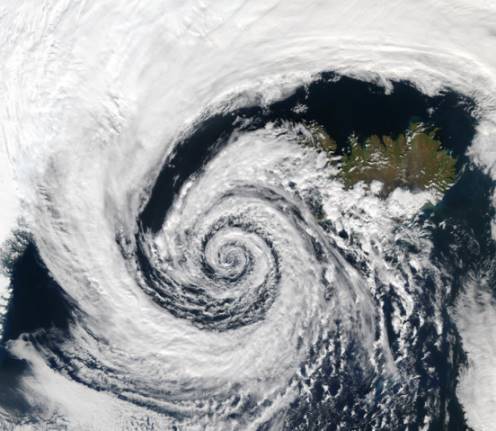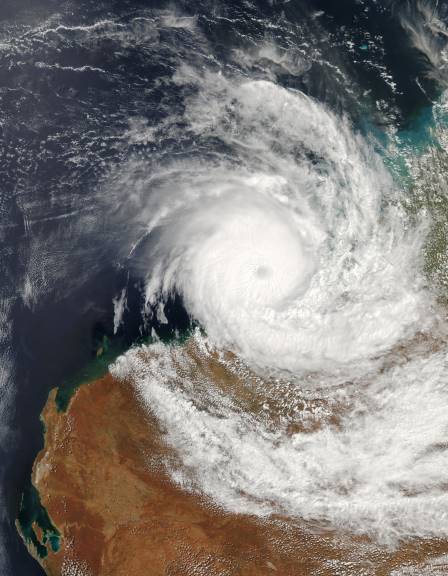
Coriolis Effect
One way I have found helpful to think of the Coriolis effect is to imagine the Earth as consisting of two nine-lane motorways, one in the northern hemisphere and one in the southern. Each lane is 10° of latitude wide.
Whereas the meridians of longitude are all the same length (approx 40,000km), the parallels of latitude vary.

Since the Earth rotates once every 24 hours, it follows that the rotational speed in km/h varies with different latitudes.

Latitude |
Length of 1° longitude. (Km) |
Speed (Km/h) |
Speed (Knots) |
Pole |
0 |
0 |
0 |
80° |
19 |
291 |
157 |
70° |
38 |
573 |
309 |
60° |
56 |
837 |
452 |
50° |
72 |
1,075 |
581 |
40° |
85 |
1,281 |
692 |
30° |
96 |
1,447 |
782 |
20° |
105 |
1,570 |
848 |
10° |
110 |
1,644 |
888 |
Equator |
111 |
1,670 |
902 |
So imagine yourself in the outside lane of this 9-lane motorway, on the Equator, hooning along in an easterly direction at 1,670 km/h. The car in the lane inside you, in the northern hemisphere, is going slower, and the ones inside that, slower still. Now imagine trying to throw a tennis ball from one car to another. You throw it directly out of the window, at 90° to your direction of travel. The ball has your easterly velocity, so tends to pass in front of the car inside you. It appears to swerve to the right, or to the east. (1)
A ball thrown from a car in one of the slower tracks to a faster car appears to swerve to the right, or the west, and pass behind the faster car. (2)
The Coriolis effect is a little more difficult to explain for objects moving
in an east-west direction. Imagine throwing your tennis ball directly east from
your moving car on the 40° northern parallel. Your car continues round the
track, a 'small circle' with its centre a point on the axis of the Earths rotation,
between the equatorial plane and the Pole. The ball continues its tangent from
where you threw it, but follows a 'great circle' determined by gravity operating
towards the centre of the Earth, on the equatorial plane. To you, in your speeding
car, the ball appears to veer to the right.
Thus, when wind rushes from a high pressure zone towards a lower pressure, in the northern hemisphere it tends to swerve right, and get into an anticlockwise spiral.
See this anti-clockwise Low Pressure system in the northern hemisphere.

The opposite occurs in the southern hemisphere, with the Coriolis effect causing wind direction to bend leftwards, and depressions or cyclones to rotate in clockwise direction.

Cyclone Fay over Western Australia on March 25, 2004.
Buys-Ballot Rule in the Southern Hemisphere says: 'If you LOOK into the
wind, the LOW is on your LEFT.'
More reading on the Coriolis Effect
The
Coriolis Effect
Getting
Around The Coriolis Force
How
Do We Understand the Coriolis Force?